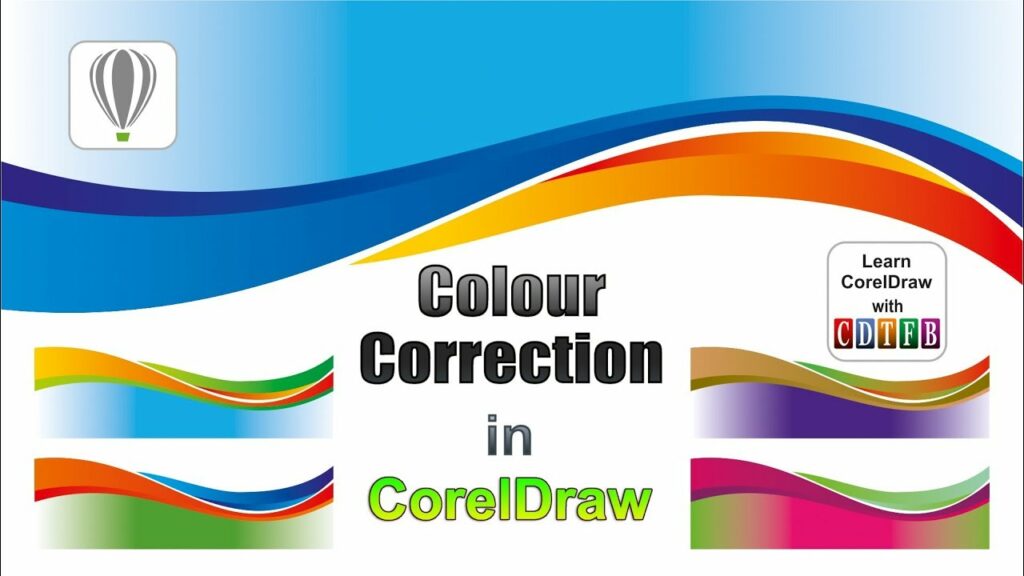Mastering Color Correction in Vector Design: An Extensive Guide for CorelDRAW Users

Introduction: Color correction is a crucial aspect of vector design, allowing designers to ensure accuracy, consistency, and vibrancy in their artwork. CorelDRAW, a leading vector design software, provides a comprehensive set of tools and features for manipulating colors and achieving desired color effects. In this extensive guide, we delve into the realm of color correction in vector design using CorelDRAW, exploring techniques, strategies, and best practices for achieving optimal color results.
Part 1: Understanding Color Correction in Vector Design Color correction involves adjusting the color balance, saturation, brightness, and contrast of vector artwork to achieve desired visual effects and maintain color accuracy across different output devices and media. In vector design, color correction is particularly important for ensuring consistent color reproduction and enhancing the overall quality of the artwork. Whether you’re working on illustrations, logos, or graphic designs, mastering color correction techniques is essential for achieving professional-looking results.
Part 2: Overview of Color Correction Tools in CorelDRAW CorelDRAW offers a wide range of tools and features for color correction in vector design, including:
- Color Adjustment: Adjust parameters such as hue, saturation, brightness, and contrast to fine-tune the appearance of colors within vector artwork. CorelDRAW provides intuitive sliders and controls for precise adjustments, allowing designers to achieve desired results with ease.
- Color Styles: Create and apply custom color styles to vector objects, allowing for consistent color management and easy updates across multiple objects or documents. CorelDRAW provides a robust system for managing color styles, including options for creating, editing, and applying color styles with flexibility and efficiency.
- Color Palettes: Explore predefined color palettes and harmonies to create harmonious color schemes that enhance the visual appeal of vector designs. CorelDRAW offers a variety of color palette presets, as well as tools for creating custom color palettes based on specific criteria.
- Color Proofing: Preview vector artwork in different color profiles and output devices to ensure accurate color reproduction across various media, such as print, web, and digital displays. CorelDRAW provides tools for simulating color profiles and performing color proofing to identify and correct color discrepancies.
- Color Management: Manage color profiles, rendering intents, and color spaces to ensure consistent color reproduction and accurate color matching in vector designs. CorelDRAW offers advanced color management options, allowing designers to customize color settings according to their specific workflow and output requirements.
Part 3: Applying Color Correction Techniques in CorelDRAW To apply color correction techniques in CorelDRAW, designers can follow these steps:
- Open the vector artwork in CorelDRAW and identify areas that require color correction.
- Use the Color Adjustment tool to adjust parameters such as hue, saturation, brightness, and contrast to achieve the desired color balance and vibrancy.
- Apply color styles or palettes to vector objects to create cohesive color schemes and ensure consistency across the artwork.
- Preview the artwork in different color profiles and output devices to identify and correct color discrepancies.
- Fine-tune color settings and adjustments based on the intended output and media, ensuring accurate color reproduction and optimal visual impact.
Part 4: Practical Applications and Techniques Color correction techniques can be applied to a variety of vector design projects, including illustrations, logos, icons, and more. Designers can leverage color correction tools and features in CorelDRAW to achieve desired color effects, enhance the visual appeal of their artwork, and ensure consistent color reproduction across different output devices and media. By mastering color correction techniques, designers can elevate the quality of their vector designs and create professional-looking artwork that captivates and inspires viewers.
Part 5: Tips and Tricks for Effective Color Correction To achieve effective color correction results in CorelDRAW, consider the following tips and tricks:
- Start with a clear understanding of the design objectives and desired color effects, selecting color correction techniques that align with the overall vision and message of the artwork.
- Use reference images and color swatches to ensure accurate color reproduction and consistency in vector designs.
- Experiment with different color adjustment parameters and settings to achieve the desired color balance, saturation, brightness, and contrast.
- Pay attention to color harmony and contrast principles when applying color correction techniques, ensuring that colors complement each other and create visual interest.
- Regularly preview the artwork in different color profiles and output devices to identify and correct color discrepancies before finalizing the design.
Part 6: Conclusion Color correction is a vital aspect of vector design, allowing designers to achieve accurate color reproduction, consistency, and vibrancy in their artwork. CorelDRAW provides a comprehensive set of tools and features for color correction, enabling designers to fine-tune color settings, apply color styles, and ensure accurate color matching across different output devices and media. By mastering color correction techniques in CorelDRAW, designers can elevate the quality of their vector designs and create visually stunning artwork that resonates with viewers.




